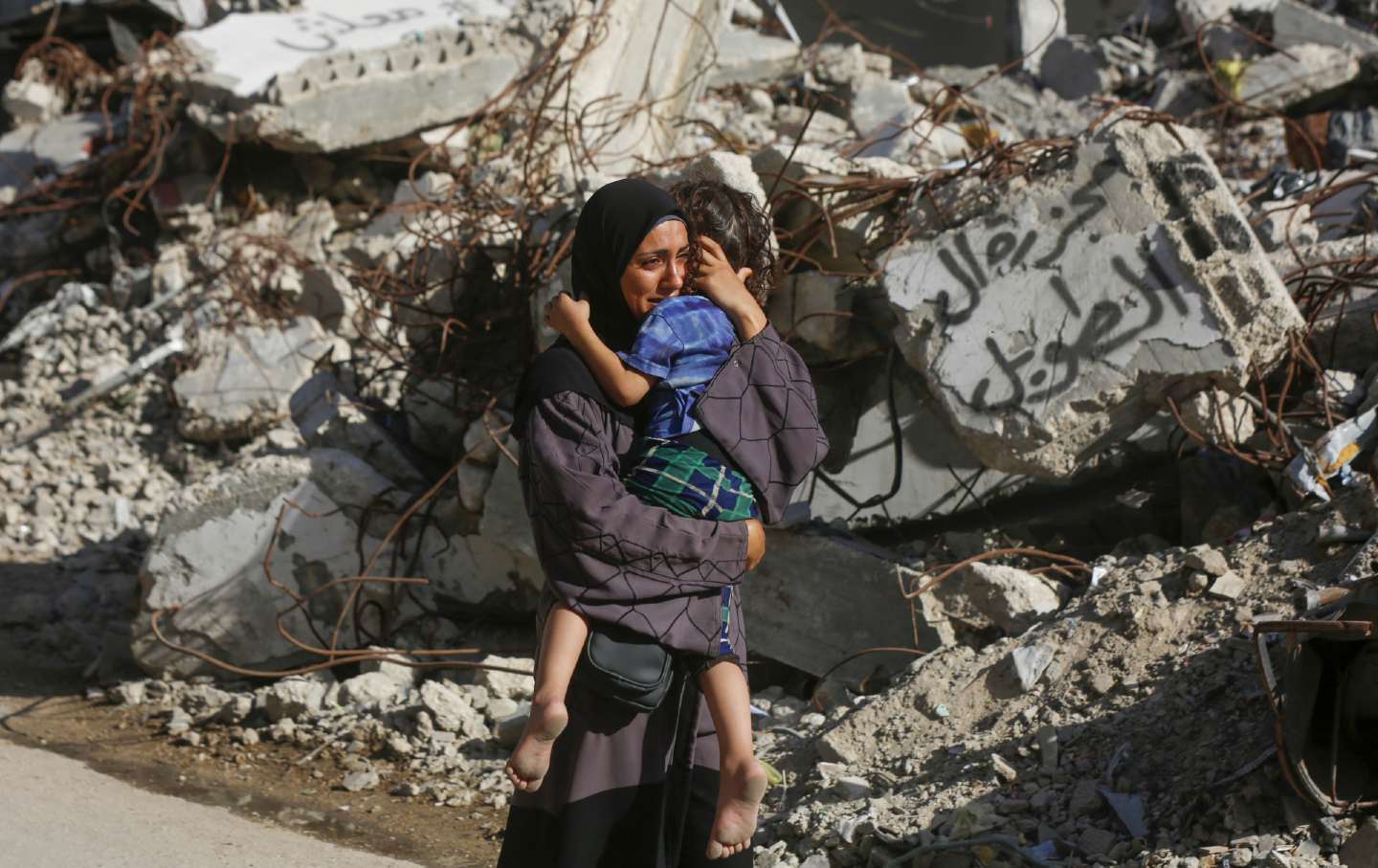Cambodia Is Teaching the World How to Clear Land Mines
The country’s history of bombardment has led it to develop expertise in the dangerous, delicate business of removing these hidden threats.
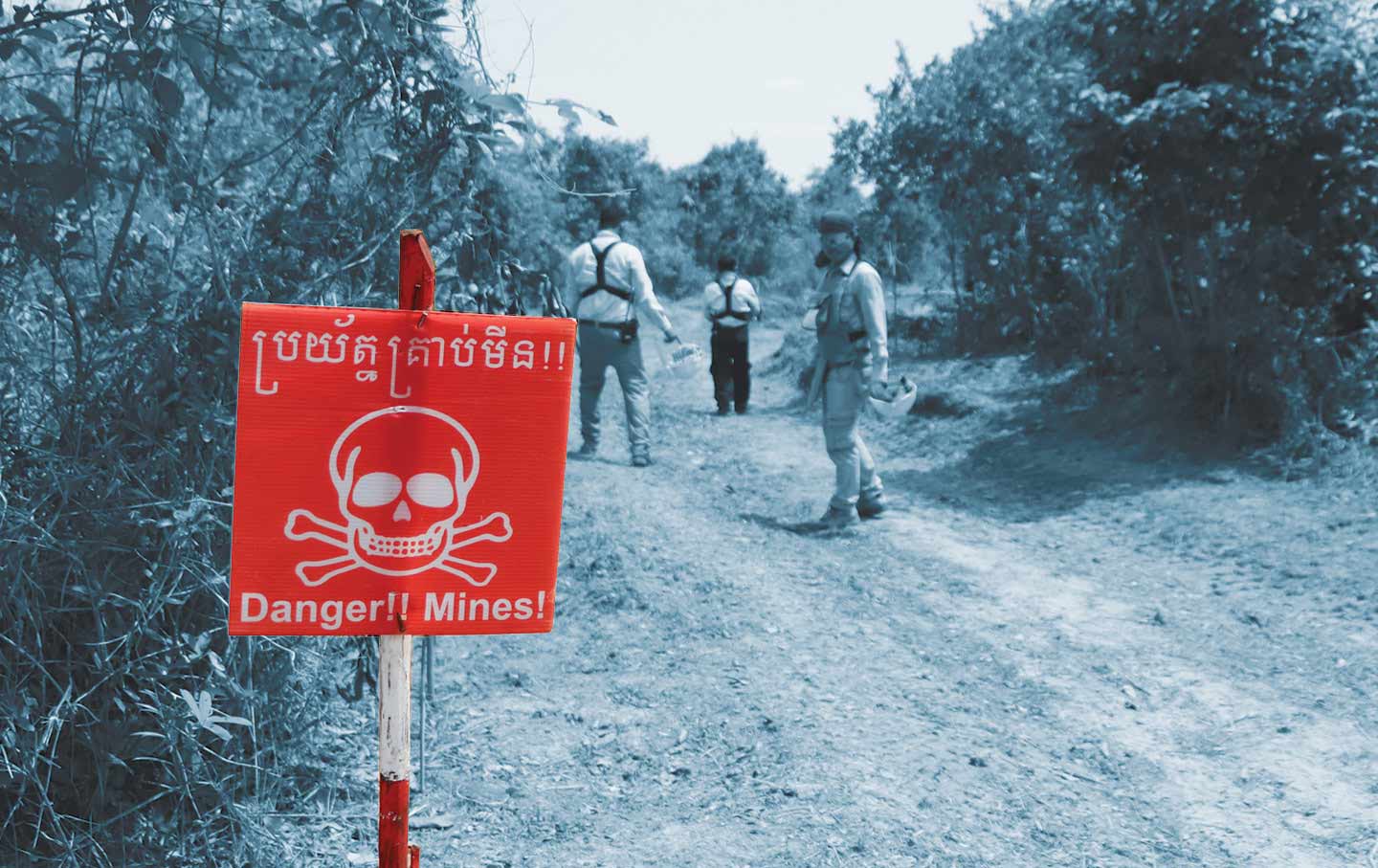
Siem Reap, Cambodia—Before I signed the waiver, Sophie Schillings went over the rules. “Please don’t run in the minefield,” she said. “And don’t pick anything up.”
This was my first time in a minefield. I was listening carefully.
It was a misty morning in Cambodia, and although it was barely 10 am, the heat was already baking the air. I was about to enter a known minefield near the Trei Nhoar commune, less than an hour’s drive from Siem Reap, Cambodia’s second-largest city and the gateway to its legendary temples. The HALO Trust, a UK-based NGO and the world’s largest demining nonprofit, was working to clear the mines from the area, and Schillings, HALO’s deputy program manager for Cambodia, was judiciously advising me on what not to do in a minefield.
I had come to Cambodia to observe the dangerous ballet of land-mine removal. More important, I had also come to learn how Cambodia has become a leading location for non-Cambodians to study the art and procedures of demining. Foreigners once flew over Cambodia to drop bombs; now foreigners fly to Cambodia to learn how to get rid of bombs. Practices and methods for mine clearance have been developed and refined here and exported to countries as far away as Ukraine, Angola, and Iraq.
Why Cambodia, you might ask? The answer lies largely with history. The nation is afflicted with some of the highest concentrations of land mines on earth, owing to the protracted wars in Southeast Asia, multiple foreign invasions, the madness of its homegrown genocide under Pol Pot, and the country’s long, slow climb out of civil strife. The northwestern region along the border with Thailand hosts what’s known as the K5 mine belt, a 750-kilometer stretch of death-in-waiting, planted in the 1980s during the fighting between the Vietnamese-backed People’s Republic of Kampuchea and the Chinese- (and US-) supported Khmer Rouge.
The east of the country is also riddled with unexploded ordnance (“UXO” in the professional lingo), mostly cluster munitions left over from the US carpet-bombing campaign under Richard Nixon and Henry Kissinger. It is estimated that from 1969 to 1973, the United States dropped at least 26 million cluster submunitions, also known as “bomblets,” on this country of just 6.7 million people—a third of which fell within one kilometer of villages. Experts believe that between 1.3 million and 7.8 million of these submunitions failed to explode (so-called “duds”). These unexploded bomblets became de facto land mines that continue to haunt this nation and hold its territory hostage.
According to the Cambodian Mine Action and Victim Assistance Authority, a government agency, there were 65,028 casualties—including 19,821 deaths—from explosions of ordnance between January 1979 and July 2023.
But what I learned was that demining doesn’t just protect you from the weapons of past wars; it can also lead you to take positions on present conflicts. The day after I was out walking with deminers near Trei Nhoar, the US announced that it would be sending cluster munitions to Ukraine. Oleksii Reznikov, Ukraine’s recently replaced defense minister, has said that Ukraine now holds the dubious distinction of being the most heavily mined nation on the planet, and the war came up often in my talks with the Cambodian demining community. Every Cambodian I spoke with thought the American decision to send cluster munitions to Ukraine was a big mistake.
“Military leaders will demand one thing, but after the fighting it’s a completely different story,” Heng Ratana, the director general of the Cambodian Mine Action Center (CMAC), the government’s demining agency, told me as I sat in his office in Phnom Penh. “We have more than 200 cluster experts working in the field,” he said, “and we continue to discover cluster submunitions every day on the ground.”
Ratana explained that dud rates are always higher than the manufacturers promise, with a 25 to 30 percent failure rate in Cambodia, and buried cluster submunitions continue to maim or kill people routinely there. Since they fall through the air, bomblets often end up embedded deeper in the earth than a soldier would lay a land mine. In soft ground, cluster bomblets can be found a meter deep, Ratana said, making them harder and more dangerous to discover.
“From our own experience and the lessons learned here,” Ratana said, “we believe that to use cluster bombs in Ukraine hurts the Ukrainian people themselves.”
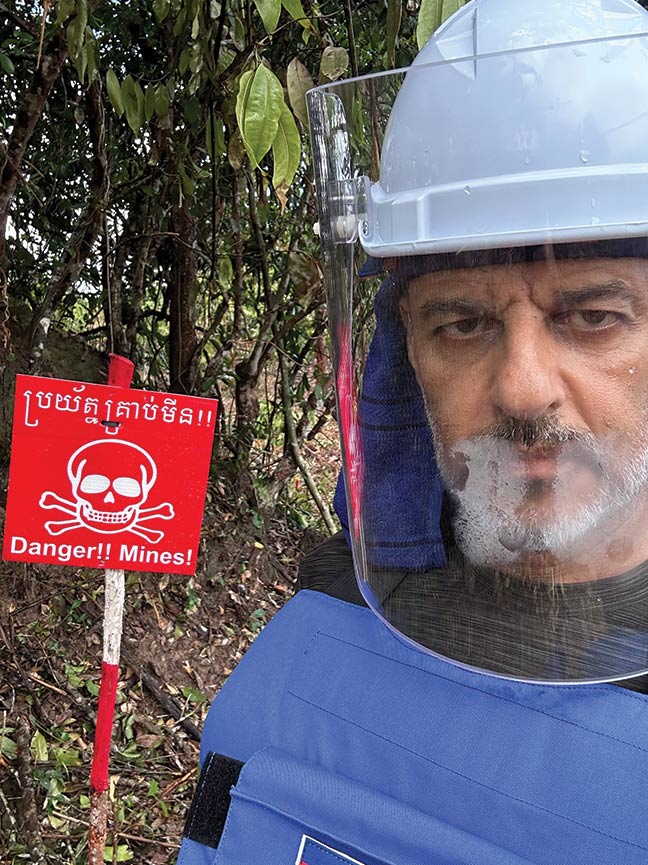
Land mines are the unacknowledged legislators of the earth. They determine who can walk the ground or work the soil. And they do so silently, lying in wait with inhuman patience for months or years or even decades. When, one day, a land mine does explode, it can burst with all the fury and vengeance of a long-ago conflict. Yet we continue to design them, produce them, and deploy them, convincing ourselves of their imminent need while reassuring ourselves of our dominion over objects. But every time we bury them in the ground, fire them from rockets, or drop them from the sky, we enslave ourselves for the foreseeable future to a tyranny of our own creation.
Like the hand grenade, the machine gun, and the armored warship, land mines were an invention of the US Civil War. Initially, the Confederacy improvised land mines out of a variety of artillery shells, but by 1863, a new science had been born. The Confederate States Congress allotted $100,000 to the Army Torpedo Bureau, “the world’s first institution devoted to landmine warfare,” according to Kenneth Rutherford, a historian of land mines. The bureau was headed by Brig. Gen. Gabriel Rains, the inventor of the Rains fuse, a sensor that would activate an artillery shell if someone stepped on it with a mere seven pounds of pressure. Confronted with this new reality, Union commanders would sometimes force Confederate prisoners of war to march in front of them as a rudimentary form of mine clearance.
German engineers refined the Rains fuse just in time for World War I. During World War II, Britain, France, Germany, and Italy laid as many as 19 million land mines in North Africa alone. World War II also saw the extensive deployment of bounding fragmentation mines, the most infamous being the German S-mine, also known as the “Bouncing Betty.” When tripped, these mines shoot up about three feet into the air and then explode, spraying shrapnel in a 360-degree radius and killing or mutilating anything nearby. As for cluster munitions, the United States deployed them extensively during the Vietnam War. A 1972 US Air Force review of BLU-63 bomblets, over 1 million of which were dropped in Cambodia, showed that the Hoffman Electronics Corporation received a contract to provide almost 24 million units to the Air Force. The cost per bomblet? Thirty-five cents.
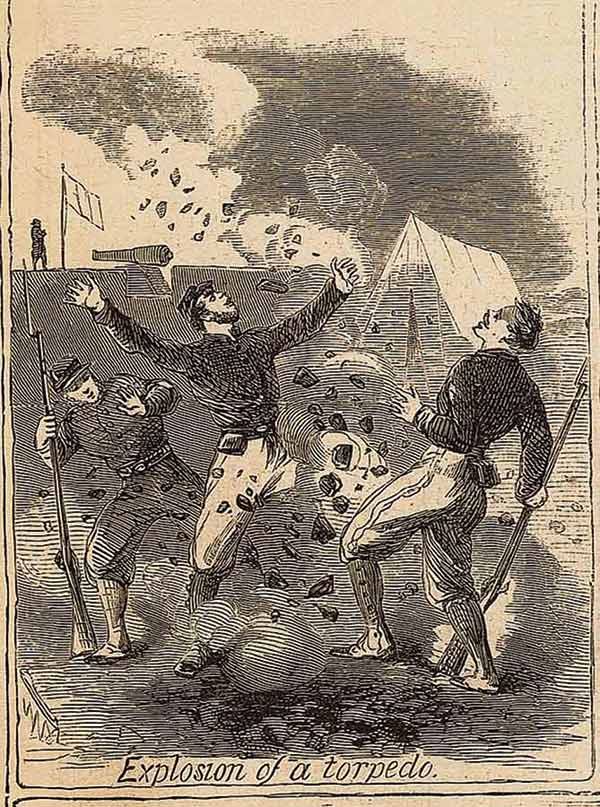
Adjusted for inflation, 35 cents in 1972 equals $2.55 today. It’s often said in the demining community that a land mine costs as little as $1 to produce but $1,000 to remove.
In the early 1990s, after the collapse of the Soviet Union and the dissipation—or so it seemed at the time—of the threat of global nuclear annihilation, the international human rights community turned to the problem of land mines. In 1991, Asia Watch (part of Human Rights Watch) and Physicians for Human Rights jointly published a report titled “Land Mines in Cambodia: The Coward’s War,” which detailed the terrible toll that land mines had taken on civilians there. A movement was building, and Cambodia and Afghanistan were repeatedly mentioned as the countries that were suffering the greatest devastation by this indiscriminate weapon. Globally, the most recognized activist fighting the scourge of land mines was Princess Diana, who in 1997 famously walked through a minefield in Angola that was being cleared by HALO.
Later that year, the Anti-Personnel Mine Ban Convention was signed in Ottawa, Canada, taking effect on March 1, 1999. To date, 164 countries (including Ukraine) have joined the treaty. However, 32 countries—including the United States, Russia, China, Iran, Israel, India, Pakistan, and North and South Korea—have not. The US position is complicated: In June 2022, the Biden administration, like the Obama administration before it, pledged to forgo the use of antipersonnel land mines and destroy US stockpiles, except for those that it considers necessary to defend South Korea against an invasion by its neighbor—often called the “Korea exception.” At the same time, the US also provides significantly more funding for global demining efforts than any other nation.
But the land-mine treaty does not ban the use, stockpiling, or production of every kind of land mine—only the victim-activated antipersonnel mine. Mines that are operated by remote control, for example, are not banned; neither are anti-vehicle and anti-tank mines. And cluster munitions are regulated by a different international treaty. The Convention on Cluster Munitions was adopted in 2008 and went into effect in 2010. That treaty has been signed by 124 countries, but 73 countries—including Ukraine, the US, Russia, China, Iran, Israel, India, Pakistan, and both North and South Korea—have not signed on.
Popular
“swipe left below to view more authors”Swipe →In Cambodia, the destructive force of land mines, cluster munitions, and other explosive remnants of war remains a terrifying reality in people’s daily lives. In Phnom Penh, I met Borin Bun, a 38-year-old mother of two who lost her right leg below the knee when she was a 10-year-old kid searching for mangoes; she didn’t receive a prosthetic limb until she was 18. That same year, she joined the Cambodian Handicraft Association, a small NGO that helps women who have been disabled by land mines or polio. I met Bun, who started as a weaver and is now a tailor, at the association’s workshop, a dimly lit sewing factory near the Tuol Sleng Genocide Museum that raises funds by selling handmade silk scarves and souvenirs.
Land-mine discoveries and detonations continue to occur. The day before I visited the minefield near Trei Nhoar, a HALO deminer found an unexploded 60-millimeter mortar round nearby. The previous day, a 42-year-old farmer lost his right foot after stepping on a land mine as he was foraging for mushrooms near the Thai border. Though the first six months of 2023 saw a significant decline in explosive ordnance casualties compared with 2022, late June and early July saw five accidents (including two deaths) in 10 days, according to Miles Hawthorn, HALO’s program manager for Cambodia.
When land mines don’t kill their victims, they often destroy a person’s ability to make a living. Before I suited up with the deminers in a Kevlar vest and a white helmet with a thick visor, Ran Tith, a field officer and 14-year HALO veteran, told me that the minefield I’d be visiting, laid by the Khmer Rouge, is considered low-density. Even so, Chinese-made 72-Alpha antipersonnel and Type 69 bounding fragmentation mines had been found there. And after someone was killed by a mine explosion in 1998, the land was deemed too dangerous to farm—an expensive loss for the three families on whose land the minefield sat and the village of 724 people nearby. In an agrarian society like Cambodia’s, so much really does depend on wheelbarrows.
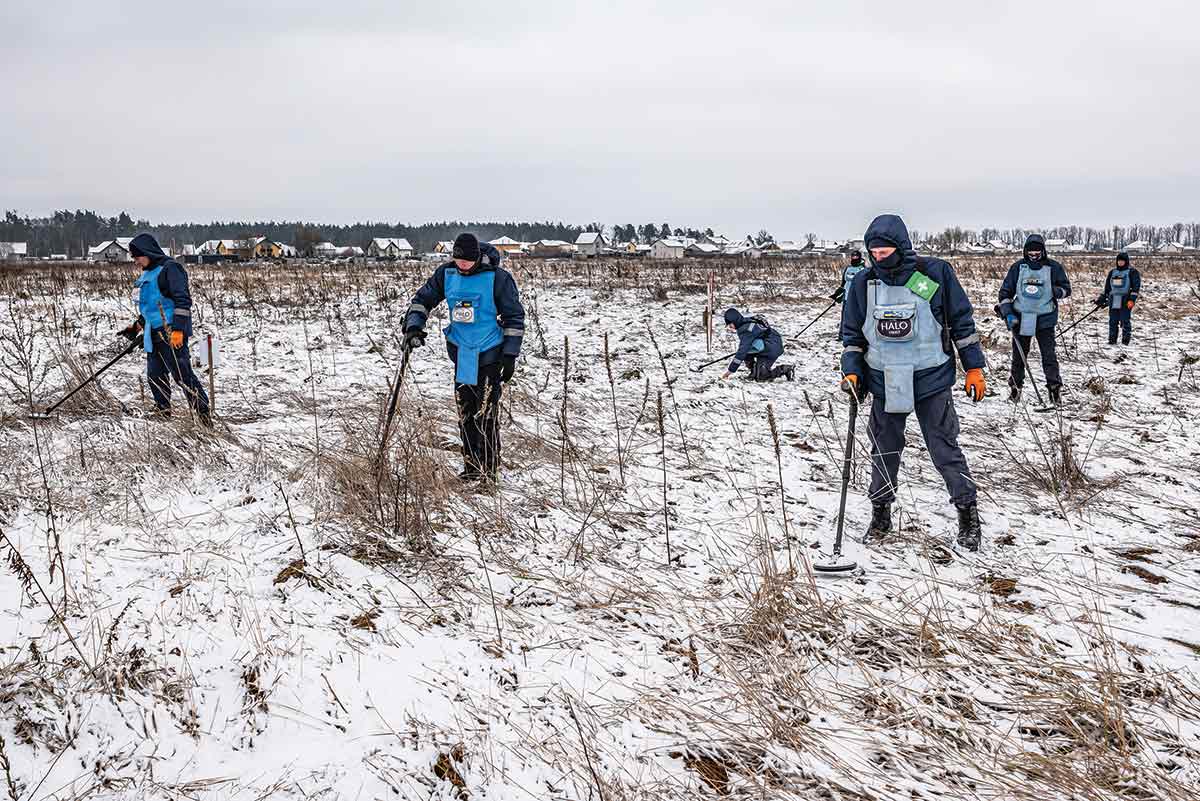
HALO (the acronym stands for Hazardous Area Life-Support Organization) began working in Cambodia in 1992, when the country, then governed by the United Nations Transitional Authority in Cambodia, was slowly rising from the ashes of its civil war. Since then, HALO—which began in 1988 in Afghanistan, where it is still active—has cleared nearly 5,000 minefields and destroyed more than half a million mines and other explosive ordnance in Cambodia. Its staff there is made up of 1,214 Cambodians and eight international workers, and 51 percent of its deminers are women. Six of its employees are victims of land mines, all injured prior to working at HALO.
But the mission of HALO’s office here goes beyond Cambodia. HALO runs programs in 30 countries, including a new one in the Solomon Islands, established to remove the World War II munitions that still litter places such as Guadalcanal. Earlier this year, the Solomon Islands team came to Cambodia, as many other international teams have in the past, for instruction. And since 2006, HALO’s Cambodia office has been training people to become field officers for the organization’s other international operations.
I met the latest class, made up mostly of young people with experience in the international humanitarian sector and a few older, ex-military types. Carlos Scull, a solidly built 37-year-old Venezuelan, was one of the students. Scull, who holds a master’s degree in public policy, told me that he and his classmates had “been learning from the Cambodians from the beginning of our training.” He didn’t know where HALO would place him after completing the program, but he hoped at some point in the future to bring his newly honed demining skills “back to Latin America.”
The class had recently been out in the field demining for the first time, and Katie Robjent, a 29-year-old Briton, found two land mines. “I won’t lie,” she told me. “It was daunting.” The mines had been discovered in a small, parceled-out area and were buried only two to three centimeters in the ground. “It was a bit surreal,” Robjent said, “but also very satisfying and rewarding.” She was especially surprised by the loud sound and copious amount of smoke the mines produced when they were later destroyed by a controlled explosion. “It was an amazing feeling,” she said. “They were gone now. They can’t do any more damage.”
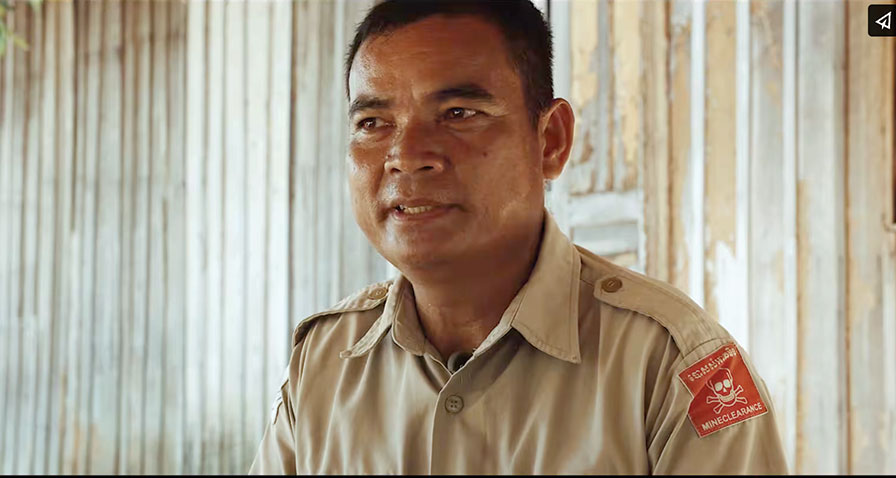
The life of Ny Ra, a 55-year-old operations manager at HALO’s Cambodia office, illustrates some of the ways that demining skills among Cambodians have developed and traveled. After his father was killed by the Khmer Rouge in 1979, Ny Ra and his family fled the city of Sisophon for Thailand, where he lived as a refugee from the ages of 12 to 25. The camps there were prime recruiting grounds for armed factions opposed to the Vietnamese-installed People’s Republic of Kampuchea, and Ny Ra said he was press-ganged into firing mortar rounds as part of a crew with the Khmer People’s National Liberation Front. In 1996, unemployed and in search of a steady paycheck after the civil war ended, he began demining with HALO. It’s not impossible that at some point in his long career, Ny Ra may even have cleared some of the same mortar rounds that he had fired as a young conscripted soldier.
He moved up through the organization and was one of the first employees trained to use the Handheld Standoff Mine Detection System, or HSTAMIDS. Developed by the US military, this specialized piece of equipment is a metal detector that also uses ground-penetrating radar. In 2008, Ny Ra was sent to Herat, Afghanistan, to teach Afghan deminers how to use HSTAMIDS. Later, he spent a year training deminers in Laos. Now back in Cambodia, he has trained demining teams from Colombia, Myanmar, and Ukraine. “This country is very experienced with land mines,” he told me. “We are like a demining university for others.”
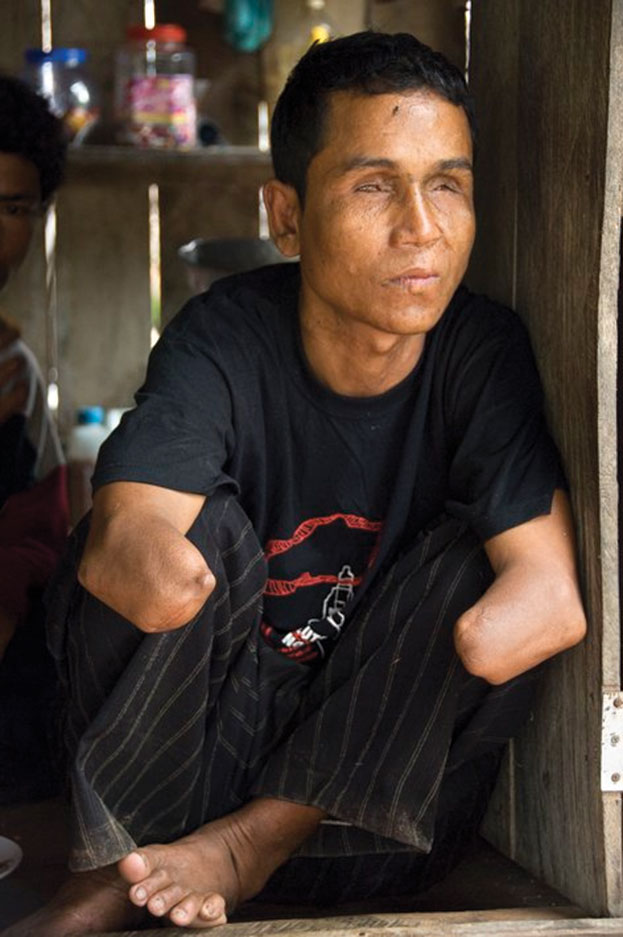
HALO is far from the only international NGO operating in Cambodia’s demining sector. Others include the Norwegian People’s Aid, the UK-based Mine Action Group, and the Belgian organization APOPO, which is famous for training African giant pouched rats to sniff out land mines around the world. (APOPO is a Dutch acronym for Anti-Persoonsmijnen Ontmijnende Product Ontwikkeling—Anti-Personnel Landmines Detection Product Development, in English.) APOPO’s training and research center is in Morogoro, Tanzania, where African giant pouched rats are indigenous, but the group has been working in Cambodia since 2014.
Along with teams of specially trained technical survey dogs, APOPO has 59 mine-detection rats working in Cambodia. The rats, naturally endowed with an incredibly keen sense of smell, are taught in Tanzania to sniff out the TNT in an explosive. They can detect the smell of a mine buried up to about eight inches in the ground. Since the rats, which are slightly smaller than the average house cat, weigh less than three pounds, they are far too light to set off the device, and APOPO has never lost a single one to a land mine.
Nocturnal by nature, the rats have an abbreviated work schedule. They are awakened at 4 am. Sunscreen is gently applied to their ears and tails, and they are transported to a minefield to commence work. A typical day lasts from 6 am to 9 am. Thus far, APOPO’s Cambodian program has cleared 799 cluster munitions, almost 2,000 antipersonnel mines, and a similar number of other dangerous remnants of war, such as unexploded mortar rounds. In Cambodia, I learned, the three most productive rats are named Ronin, Princess Diana, and Sharleen.
Vankeng Dit took me around APOPO’s visitor center in Siem Reap one morning. There, I met and held Sofia, one of the rats, and watched another, Sharon, demonstrate her mine-detection abilities in the controlled environment of the center. Dit told me that since he began working with APOPO, he had given up eating rats, which are considered a delicacy in Khmer cooking. “The rats are our brothers and sisters,” he said. “We raise them as our children.”
That family spirit also attaches to APOPO’s technical survey dogs. Outfitted with small backpacks that include advanced electronics such as a GPS, camera, and beacon, APOPO’s dogs have learned how to survey large swaths of land quickly to ensure that the area is mine-free or to detect any mines that might still be hidden.
APOPO trains its dogs in Cambodia and then sends them and their handlers to other locations where APOPO works. Dogs have been sent to South Sudan and Turkey, and teams of dogs and rats have been sent to Nagorno-Karabakh. Next year, APOPO’s Cambodia operation expects to train six Ukrainian women in handling the technical survey dogs. (Ukrainian men between 18 and 60, needed for the war, are generally blocked from leaving the country.)
The largest demining organization in Cambodia is CMAC, established by royal decree on June 10, 1992. Only Afghanistan has an older national mine action center, but the United Nations has always played the central role in Afghanistan’s demining. The work in Cambodia, on the other hand, has been independent of the United Nations since 1993.
Over the years, CMAC has developed a number of specialized demining skills, including underwater explosives clearance, which is necessary because a vast number of bombs from the Vietnam War still sit at the bottom of the Mekong River. Explosive harvesting is another element of the agency’s work. The explosive components are cut out of the bombs while in place and then repurposed. CMAC provides the explosives to other demining organizations, such as HALO, so that they can conduct controlled explosions of the mines when they’re discovered, a common practice.
CMAC also shares its expertise in mine clearance with other nations in a South-South cooperation program, which began in 2010 when Colombian deminers came to Cambodia to learn CMAC’s techniques and CMAC went to Colombia to help develop the training program there. Different countries will have different needs, Heng Ratana, the CMAC director general, told me. Iraqi teams have come to CMAC to be trained in IED disposal, he said, while teams from Laos come to learn about clearing cluster munitions. Through this Japanese-funded program, CMAC has also worked directly with demining teams from Afghanistan, Angola, Mozambique, Myanmar, and, most recently, Ukraine.
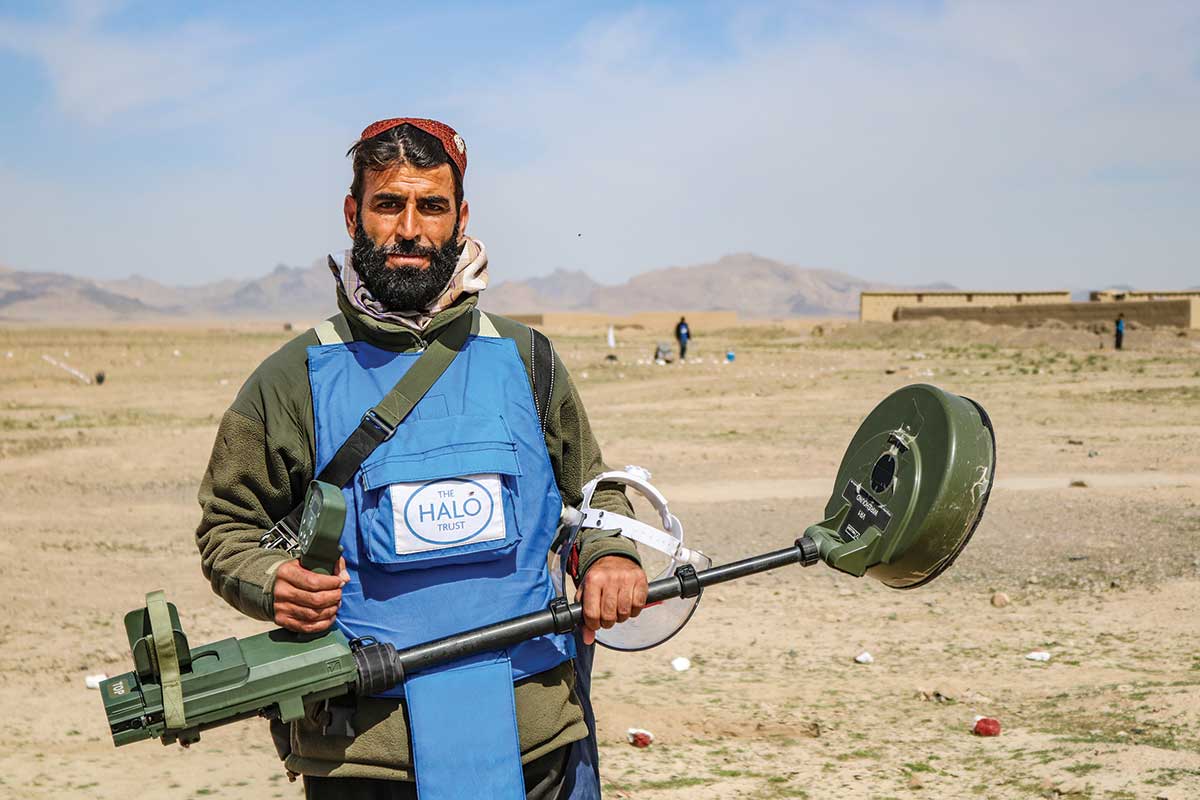
The decades-long emergency of land-mine contamination in Cambodia has compelled the country to innovate. Cambodia’s political system, however, hasn’t been so agile. Many young Cambodians I met complained to me privately about political corruption and what is essentially one-party rule. Prime Minister Hun Sen ruled Cambodia for 38 years, and the elections this summer were widely seen as illegitimate, with the US declaring them “neither free nor fair.” Hun Sen, moreover, recently handed the prime minister’s post to Hun Manet, his eldest son, while promising that “if my son fails to meet expectations…I would reassume my role as prime minister.” Despite such political limitations, Cambodia’s demining sector remains internationally recognized for its professionalism.
But all eyes, in Cambodia and around the world, are on Ukraine now. When the war there ends, what kind of future will Ukrainians face, considering the number of land mines buried in their soil? What lessons can Ukraine take from Cambodia’s example?
The learning, in fact, is a two-way street. The problem in Ukraine isn’t only the spread of cluster munitions or the massive scale of land-mine contamination. Both Ukraine and Russia have laid antipersonnel mines, though Russia has used them far more extensively. Many military experts believe that Ukraine’s failure to advance in its latest offensive has been due to the Russian occupier’s extensive use of land mines. But the war in Ukraine has also created new types of land mines. In Ukraine, Russia is deploying never-before-seen mines, some of which it claims are equipped with artificial intelligence.
Ny Ra, HALO’s operations manager, was one of several people who told me about these new mines—including the POM-3, a successor to the Bouncing Betty. The POM-3 is a bounding fragmentation mine; when it’s triggered, the deadly portion of the mine springs up to five feet into the air before exploding, spreading shrapnel within a lethal radius of around 50 feet. But the POM-3 is set off by a seismic fuse, which means that you don’t need to step on it for it to detonate. Merely approaching the mine is enough for it to explode, making it particularly difficult to find using traditional mine-detection procedures. Russia claims that AI technology gives the mine the ability to distinguish between friendly footsteps and enemy approaches, a feat dismissed as simply impossible by technology experts.
It’s a brand-new mine that the world hasn’t experienced before, and for professionals like Ny Ra, it presents a rare opportunity to cultivate new skills. We were sitting in HALO’s board room, surrounded by displays of actual weapons that had been cut in half and a large variety of land mines and mortars, all stamped “FFE” (Free From Explosives). But there was no POM-3 in a display case. Ny Ra’s eyes sparkled as he described the mine to me. “I have asked my boss to go to Ukraine,” he said, smiling, “but we’ll see.”
Hold the powerful to account by supporting The Nation
The chaos and cruelty of the Trump administration reaches new lows each week.
Trump’s catastrophic “Liberation Day” has wreaked havoc on the world economy and set up yet another constitutional crisis at home. Plainclothes officers continue to abduct university students off the streets. So-called “enemy aliens” are flown abroad to a mega prison against the orders of the courts. And Signalgate promises to be the first of many incompetence scandals that expose the brutal violence at the core of the American empire.
At a time when elite universities, powerful law firms, and influential media outlets are capitulating to Trump’s intimidation, The Nation is more determined than ever before to hold the powerful to account.
In just the last month, we’ve published reporting on how Trump outsources his mass deportation agenda to other countries, exposed the administration’s appeal to obscure laws to carry out its repressive agenda, and amplified the voices of brave student activists targeted by universities.
We also continue to tell the stories of those who fight back against Trump and Musk, whether on the streets in growing protest movements, in town halls across the country, or in critical state elections—like Wisconsin’s recent state Supreme Court race—that provide a model for resisting Trumpism and prove that Musk can’t buy our democracy.
This is the journalism that matters in 2025. But we can’t do this without you. As a reader-supported publication, we rely on the support of generous donors. Please, help make our essential independent journalism possible with a donation today.
In solidarity,
The Editors
The Nation






